Building an extension — the ultimate guide to house extensions
Building an extension can breathe new life into your home, with a house extension adding extra space on the inside and invigorating its outside appearance. Follow this step-by-step guide to finding out everything you need to know
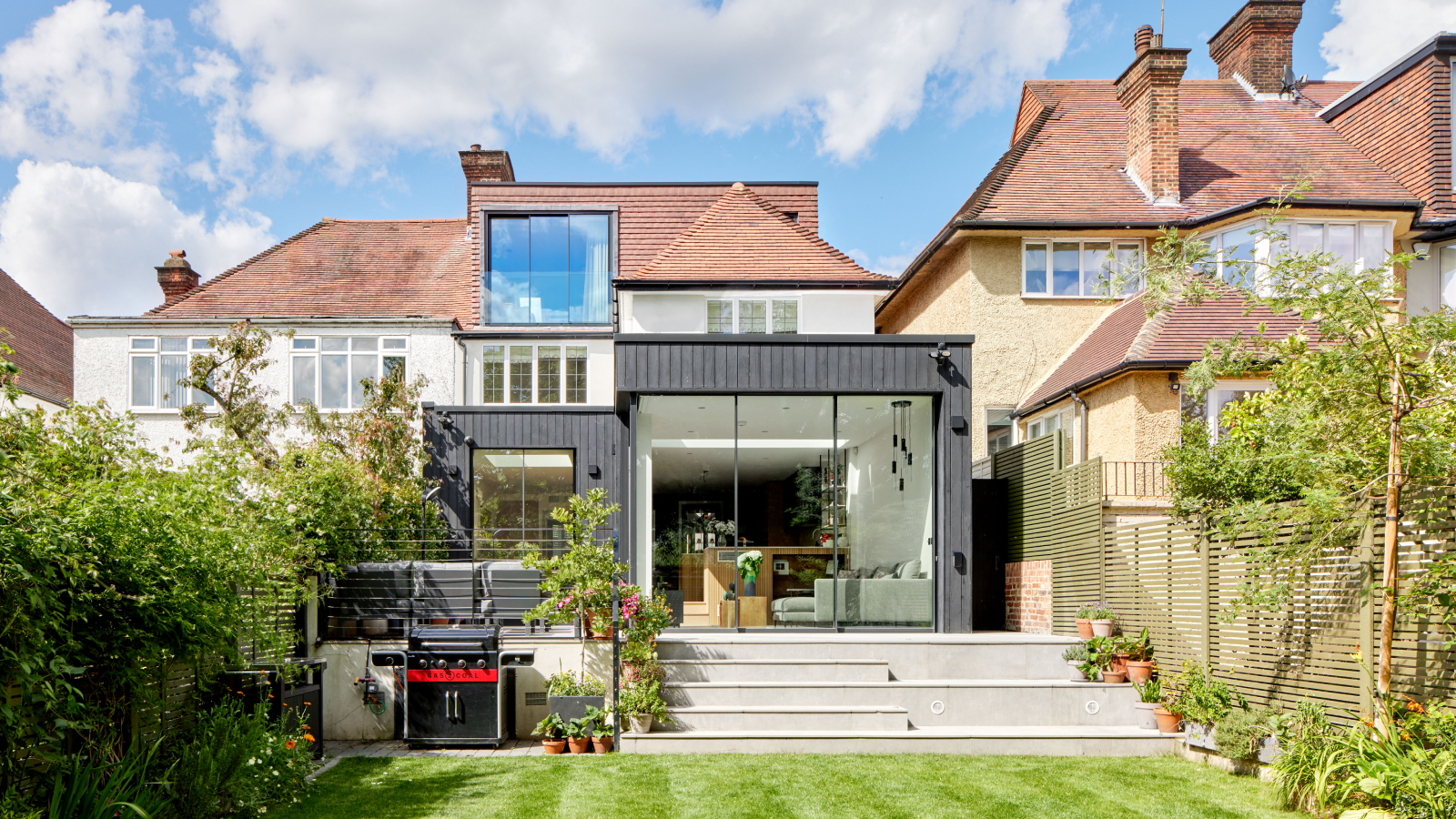
- 1. Building an extension – how to begin
- 2. Practical considerations
- 3. Building an extension – Planning and legalities
- 4. Hiring a house extension designer
- 5. Hiring the right build team
- 6. Project managing your house extension
- 7. The pre-build stage
- 8. On-site – the key stages
- 9. Snagging and handover
- FAQs
If you’re crying out for more space but don’t want to face the upheaval of moving, building an extension can be the perfect solution. But whether your house extension involves going upwards, outwards or down into the basement, the expense and disruption means it's important to get it right from the outset.
Even though building an extension isn't a one size fits all affair – every house extension will have its own criterion – that said, turning any set of architectural plans into a building with a floor, roof, walls, fixtures and fittings does involve a series of similar steps.
But, if you’ve not built anything before, you may be wondering exactly what’s involved which is where we come in. Using our own first-hand experience, along with advice from experts, we’ve prepared our ultimate guide to building an extension so you know what to expect along each step of the way.
1. Building an extension – how to begin
Should I extend or remodel?

Need more advice or inspiration for your project? Get two free tickets to the Homebuilding & Renovating Show.
If you’re weighing up between building an extension or remodelling your home, it’s worth thinking about what it is that you feel you’re lacking in your home. Is it simply bigger rooms or extra rooms? After all, changing the current layout of your home by knocking down walls or adding new ones is a far more budget friendly fix than the cost of a house extension.
While you're considering what you want, it’s also worth taking a good look at the property market in your area and speaking to an estate agent. Even though you may not be planning on moving any time soon, asking your local estate agents to see what prospective buyers are looking for will help ensure you don’t do anything that devalues your home in the future. Likewise, checking on ceiling values in the area will also ensure your extension cost doesn't mean you invest more in the work than you will ever get returned.
And although their answers won’t necessarily prevent you from extending your home, it could make you think more carefully about what you do. For example, if you’re keen on adding extra living space to make a playroom, but agents tell you buyers are seeking a work from home space instead, you could make sure your remodel or side return extension has sufficient sockets, storage and wi-fi access to future-proof it against a change of use or house sale.
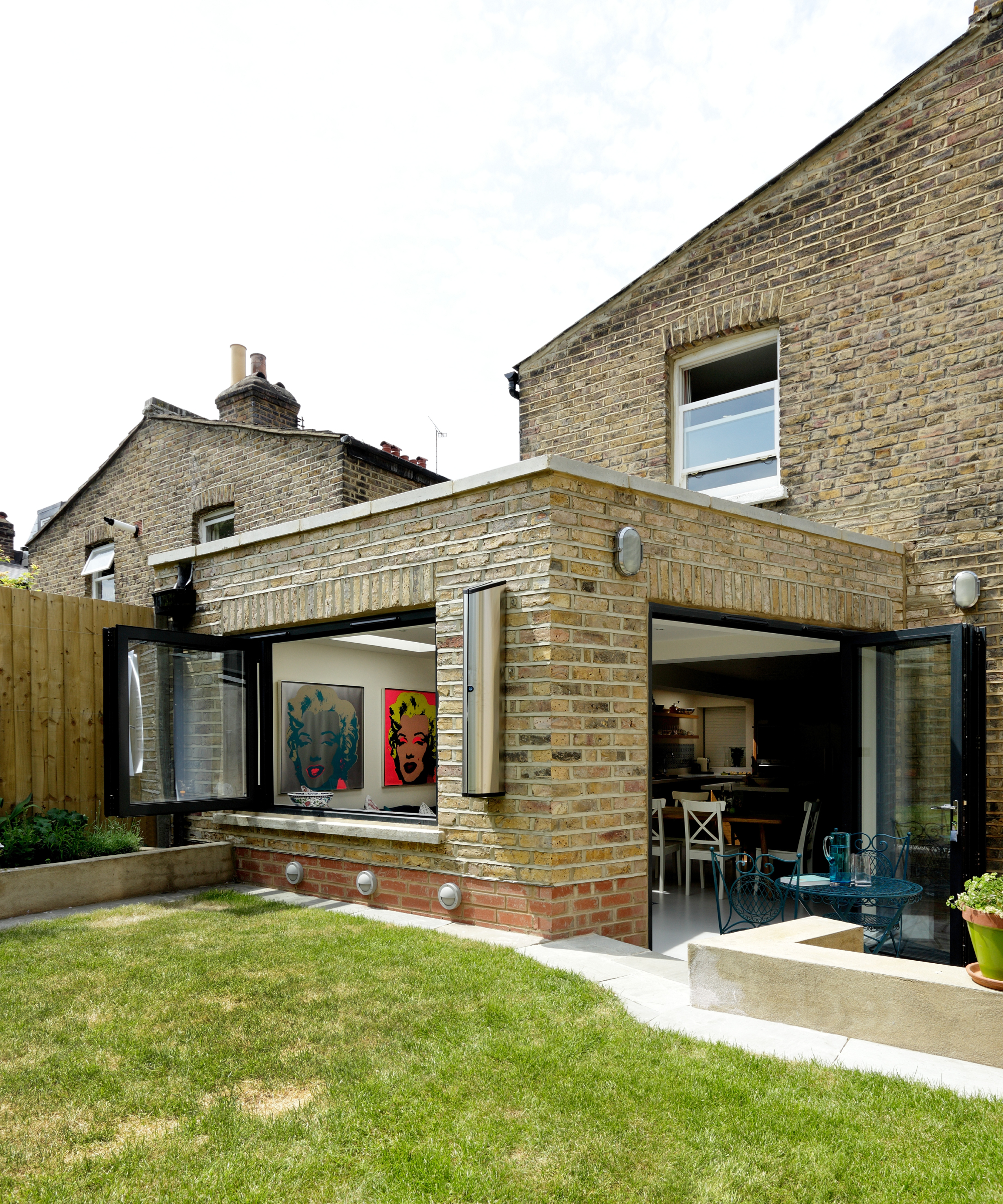
What part of my home should I extend?
It’s an obvious question perhaps, but one that needs ample consideration as it will impact everything – from your house extension ideas, extension costs, planning and legal requirements – right through to the length of time it takes to build.
Bring your dream home to life with expert advice, how to guides and design inspiration. Sign up for our newsletter and get two free tickets to a Homebuilding & Renovating Show near you.
If we take the example of needing an extra bedroom, there are a number of options available to you. Adding a loft conversion may work, but does this mean your single family bathroom suddenly becomes overcrowded and you also need en-suite bathroom ideas?
If so, perhaps your loft isn’t big enough for both, in which case you might start looking at extension ideas. As double storey extension costs don’t necessarily come in at twice the price of a single storey extension, maybe adding space to both the ground and first floor areas of your home could be a better investment?
Or, perhaps you’ve fallen in love with the thought of a large open plan kitchen extension, but will this really suit your current lifestyle? As more homes become multi-generational, with young adults finding it harder to fly the nest, having broken-plan vs open plan living room ideas can provide space and sanctuary in busy homes. Maybe building stud walls into your design will allow you to re-open the new floor plan in the future, but will provide you with extra individual rooms for now.
The point is, that while you may think you know what you need, there’s a whole raft of questions to ask yourself before you commit to any fixed plans for building your house extension. Make sure you write down everything you can think of, including your practical requirements and how you currently use your home. It’s not just about your dream design ideas, it’s getting the right combination of inspiration and practicality that will define your final plans and hopefully end with you building an extension that works for you, your home and the future.
2. Practical considerations
One area that can’t be ignored when planning your home extension, are the practical constraints of building an extension. There are some important aspects to consider about your existing property and the curtilage, such as:
- What mains services currently run to your house and will your extension interfere with them – will you need to get telephone wires raised for example?
- Does your land run over any public sewers?
- What soil type do you have as this will impact the type of foundations
- Are there trees with tree preservation orders? If so, you’ll need to make sure you know the rules for cutting down a tree
- Is there any history of flooding as you may need extra insurance?
- How easy is it to get to your property? Is there difficult site access and will this affect the type of extension you build?
- Are there any rights of way over your land?
- How close to your neighbours will the extension be?
Checking your deeds, or any original architectural plans will answer some of your questions, while you may need to call in expert advice for others such as determining the soil type.
If your home is in a sensitive location, it might also be worth getting a site appraisal by a planning consultant before engaging an architect as they will also be able to advise on potential development, as well as conducting a site survey and feasibility studies. A measured survey can also be a good option for any building project.
Given some issues you find may be more problematic than others, having all the details to hand before you start can be extremely beneficial for your timescale, and give you a clearer expectation on budgeting, as Jonathan Durndell, director of Virtual CBS, explains.
“If, for example, your house extension will be built over or in the area of a sewer, you will need to contact your water board before work begins as the location of sewers needs to be carefully considered.
“If a shared sewer (one which serves more than one property) is within 3m of your extension, then a Build Over Agreement with your local water authority is likely to be required. These can be tricky – and costly – especially if a new manhole is needed, or an existing one needs to be moved.

Jonathan Durndell is a Chartered Building Surveyor with 22 years of experience in survey, design and project work.
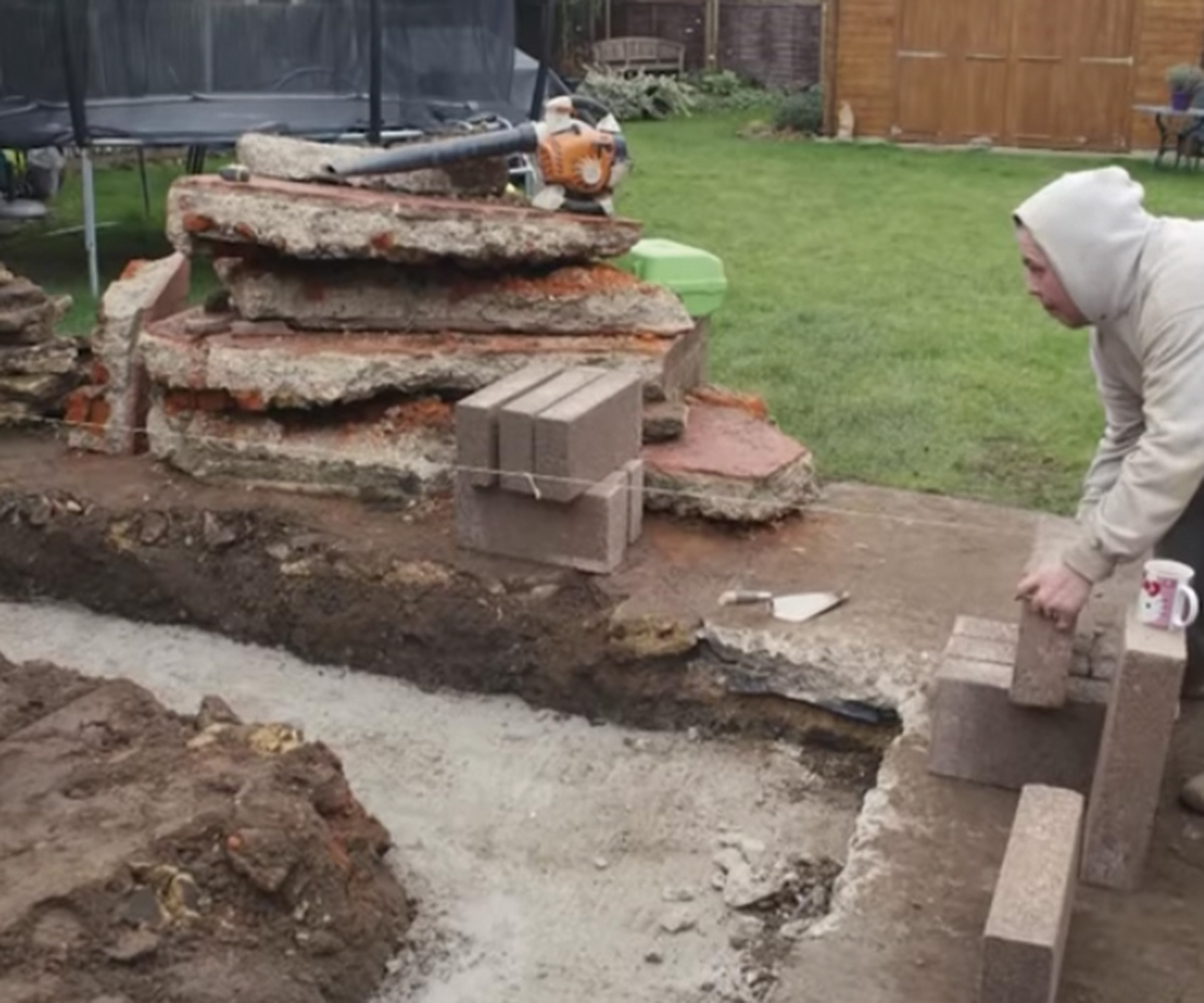
What will the neighbours say?
It’s also important to think about your existing relationship with your neighbours at this point, as they could play a part not just in the design of your home extension, but also if it’s even approved.
If you live in a terraced home with restricted access for example, you may hope to make arrangements with them to temporarily remove fence panels or use their land for short-term storage. Will they be amenable to this? Have you discussed house extensions with them at any point to understand what they feel is acceptable in terms of design and size?
An early conversation I had with neighbours on one project made it clear they had concerns about the potential height of an extension. This meant plans could be modified before even going to the planning permission stage. While the conversation was a little difficult at times, it prevented objections from slowing the process down at a critical point.
How do I make my extension work with my existing home?
You’ll also need to take some time considering the impact of a house extension on your existing home, as it will have both aesthetic and practical implications. For example, is your current property well insulated and thermally efficient, or will it also need upgrading when you add a new extension?
If you are planning on extending above an existing single-storey extension or extending over a garage, will the existing structure and foundations be able to support the increased load? You may find yourself needing to underpin existing shallow foundations; strengthen or bypass the existing with a steel frame bedded in new concrete pad footings; or demolish and rebuild. The latter is often the most cost-effective option.
Adding a house extension will also add demand to current hot water and heating systems, which may not be able to cope. Your heating engineer or plumber will need to work out what the new extension needs to be heated effectively, factoring in your boiler output, the size of the radiators, hot water cylinder size and the reheat time.

Can I afford to extend my home?
Before heading too far down the route of a house extension, you’ll of course need to determine how you will pay for it and how much money you can raise to fund the work.
There are several options when it comes to borrowing money to finance your house extension. In an ideal world, we would all finance our projects using our savings, but if you need to borrow the money, your main option for home extension loans or funding are:
Credit card: If you need to borrow thousands rather than tens of thousands for your work, an interest-free credit card might be a good choice. Shop around – the best deals offer up to 27 months of zero-rated spending
Loan: Personal loans of up to around £25,000 are suited to smaller projects. The loan may be enough to cover the building work and if you are fitting kitchens or bathrooms in your extension you can often buy these on finance from larger stores. Just keep an eye on repayments as they can quickly add up when you borrow from several sources
Remortgage or secured loan: If you are borrowing more than £25,000 you may need to remortgage or take out a secured loan against your home. Many building societies offer a Home Improvement Loan of up to £200,000
Although you may not necessarily need all your funding up front – your builder will generally stage payments for each phase of the project for example – you will need to make sure you have enough money to not just pay for the build itself, but also design fees, local authority application fees and any other professional fees from experts you may hire such as structural engineers, interior designers, lighting designers and landscapers.
3. Building an extension – Planning and legalities
Do I need planning permission for my house extension?
Even small house extension ideas will be subject to rules and regulations, and while larger and double-storey extensions will need planning permission, there are instances when Permitted Development (PD) means you won't have to go down the formal planning route. Although it’s important to bear in mind that if your house is in a Conservation Area or a designated area such as a National Park, the amount of work under Permitted Development is usually reduced.
Under PD rights certain works can be carried out providing you meet certain criteria, such as:
- Rear extensions can be up to 4m in length, but with the addition of Prior Approval (needed for larger extensions) you can extend a detached property by 8m to the rear if it’s a single-storey extension (6m for a semi or terraced house), or by 3m if it’s double
- A single-storey extension can’t be higher than 4m on the ridge and the eaves, and ridge heights of any extension can’t be higher than the existing property
- Two-storey extensions must not be closer than 7m to the rear boundary
- Side extensions can only be single storey with a maximum height of 4m and a width no more than half of the original building
- Any new extension must be built in the same or similar material to the existing dwelling
- Extensions must not go forward of the building line of the original dwelling
- In designated areas (such as areas of outstanding natural beauty, conservation areas, etc), side extensions require planning permission and all rear extensions must be single storey
- An extension must not result in more than half the garden being covered
There are also some restrictions an extension has to adhere to in general which include:
- Once works have been completed, the building must not be more than 18m high (excluding plants)
- The floor-to-ceiling height of any additional storey must not be more than 3m in height or higher than the floor-to-ceiling height of any of the existing storeys
- The overall height of the extension, including the roof, must not be more than 7m high

It's wise to engage with your local authority early on and research local planning policies to know what’s likely to get approved before you submit an application.
“Even if your extension project can be done under PD rights, it’s also still worth applying for a Lawful Development Certificate (LDC) from your local authority to confirm that the work was lawful and met PD requirements and didn’t need planning permission,” advises Amy Willis, Homebuilding’s editor. “I’m planning on some work soon and will certainly be applying for one to ensure there are no repercussions in the future,” she says.
Do I need Building Regulations for building an extension?
Building Regulations are required, even if planning permission isn’t. Permitted Development doesn’t exclude your house extension from needing Building Regulations, but you have two options available to you in terms of how these are submitted and signed off. These are referred to as building notice vs full plans approval.
The latter requires you to submit full drawings in order to obtain approval of the build details before you start. This involves regular site inspections throughout the build to check you’re in line with what’s been approved, while building notice means you can give notice to your local authority and start work 48 hours later – without full approval in place.
It’s a riskier option as you will lack the protection that building control has signed off on the design, meaning you are liable to correct any work that fails to meet Building Regulations standards upon inspection.
Plus, to take the recommended route of going out to tender (which we cover later on), you’ll need your building regulations drawn up in order for the job to be priced accurately. It’s therefore worth submitting them for approval while you’re in the tendering stage and then you haven’t really added extra time to your schedule.
“It’s worth noting too that you have the option to work with a private approved building inspector as opposed to the local authority,” says Charlie Avara, founder of Build by Charlie. “The plans will need to be submitted to them at least 5 days before starting on site and it's best to ask your builder who they prefer working with.”
However, as building regulations set out minimum requirements for ensuring a building is safe, as well as issues regarding its structural integrity, ventilation, energy efficiency and damp proofing,if you are keen on a contemporary design such as a glass box extension, you will also need to make sure your architect has paid particular attention to Part L of the building regulations.
“Part L of the Building Regulations limits the total area of glazed elements in an extension to a maximum of 25% of the extension’s floor area,” explains Jason Orme, experienced renovator and Homebuilding’s Managing Director.
“On small extensions, this can pose a problem. A small kitchen extension, perhaps adding 20m² of space, could easily have its allowance taken up by a set of bifolds – 4m(W) x 1.8m(H) = 7.2m² or 36% of the floor area – and will therefore be rejected by building control.
“There are several ways around this,” he suggests. “First of all, you need to deduct the total area of the windows and doors that are being lost as part of the extension from your additional total. If that doesn’t get you below 25%, then you’ll need to show that the new glazed extension can meet the energy performance standards achieved by a non-glazed extension in other ways.
“If that still fails, then you’ll need to commission a SAP calculations assessment to show that the CO2 emission rate from your glazed extension would be no greater than the emission from a fully compliant extension of the same size.”
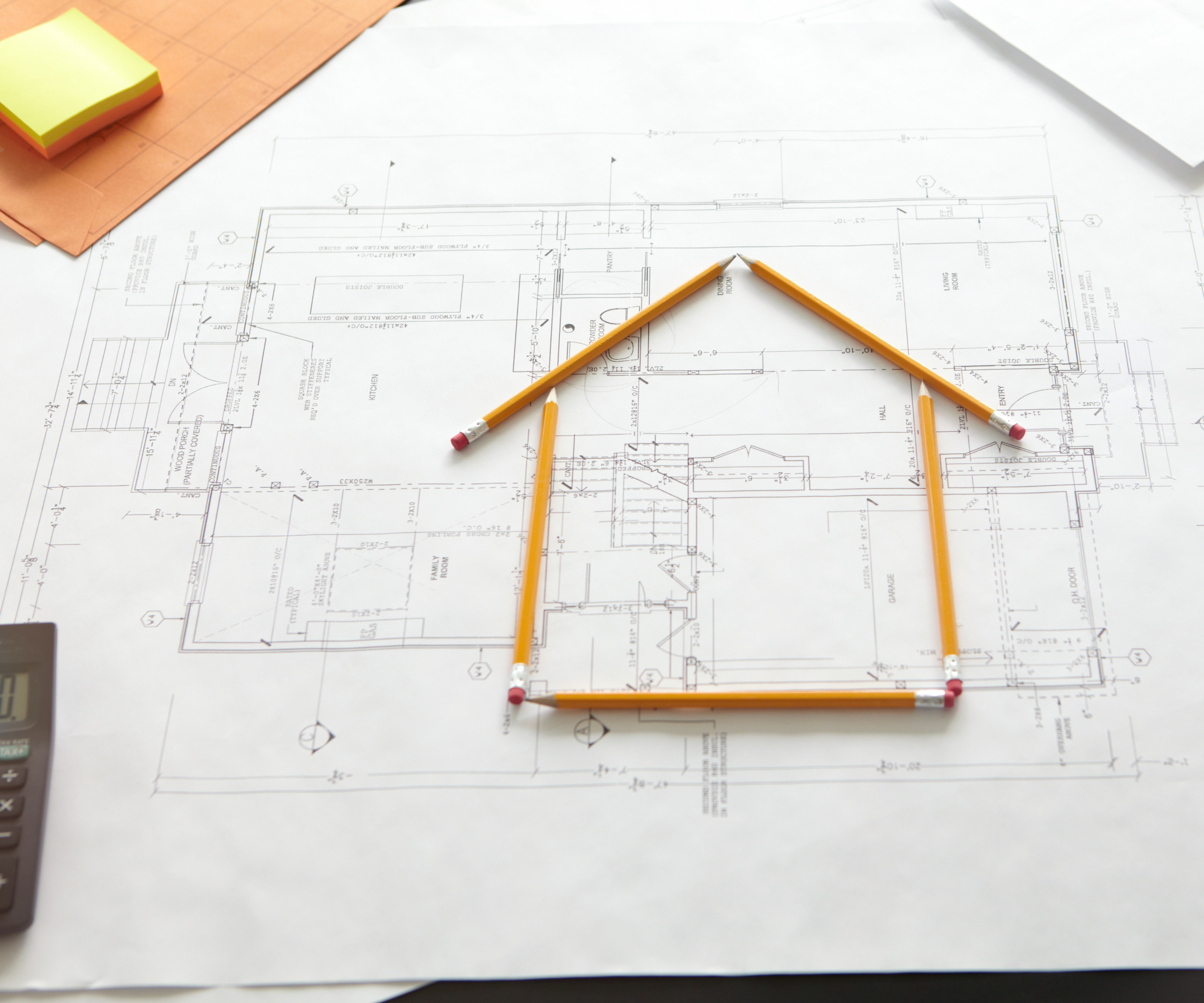

After a very successful career as MD of a design and build company Charlie launched her own domestic contracting business, BUILD by Charlie. With over 15 years in the industry Charlie has built up a wealth of knowledge on all things renovating and remodelling with a proven track record of delivering on projects ranging from the ultra modern, through to period properties.
4. Hiring a house extension designer
When it comes to the design of your house extension, there are a number of choices. You can opt for a build and design company, or you can choose an architect or architectural designer. However, don’t just approach the biggest or most well-known architectural practices in your area.
Look around and, “choose an architect who you feel really gets your lifestyle and family life, as well as what you want, and don’t want, from an extension,” suggests architect, Darren Bray, of Studio Bad. You can also ask for recommendations from friends, family and neighbours, but also look online for practices that have designed projects similar to what you are hoping to build.
“Choosing a local architect or architectural practice to design your house extension is typically a good route to follow. Often a local practice will be familiar with or have a good working relationship with the local planning authority, as well knowledge of the local housing stock. And, if they have designed extensions for neighbouring homes, they may potentially have an understanding of the local soil conditions — key when it comes to building foundations,” says Claire Lloyd, Homebuilding & Renovating’s business development editor.
“Talk to neighbours or friends in the local area who have completed work on their houses, as they may be able to offer recommendations.”
If you're competent with CAD then you can draw up plans yourself, although more complicated designs will benefit from a more expert eye due to the complexities. Bear in mind, if you’ve designed the extension yourself you may need the aid of a designer or draftsperson to draw up your plans to submit them for planning approval (if required) and a structural engineer or architectural technologist to produce drawings and calculations for Building Regs purposes. These will also form part of the tender documents when hiring builders.
Creating a design brief for your home extension
Armed with all your research, findings and ideas you will also need to pull together a short design brief before you meet with any potential architects or designers – even if at this stage you are just discussing potential ideas.
“Whether your first meeting with an architect or designer is a formal design consultation, where the first sketch design proposals are drawn up or it’s just an initial chat, it’s best to write up a short design brief detailing how your home works or doesn’t work for you,” advises Laura Jane Clark, founder of Lamp Architects. “It will then help form the basis of the first discussions you have with an architect.” Plus include any prior knowledge you have gleaned from builders or surveyors about the site.
And while it can be tempting to withhold your budget at this stage, be clear, too, about your budget as this will help a designer create a design brief that’s achievable and desirable for you. “This will signal to your architect that you are serious about getting project work done, and it encourages them to address this key item at the beginning of the process,” advises founder of Gbolade Design Studio, Tara Gbolade.
That said, you may want to hold around 20% of the total sum back so that you have a contingency budget in place from the off.
I’d also recommend that if you are personally planning on fully or partially project managing your house extension, you disclose this to every professional you speak to early on in the process. You may find companies or individuals who don’t like working this way and it’s always better to establish this at the start.
And, as architects and designers can provide a number of different services, ranging from simply providing drawings for planning permission purposes right through to preparing plans for Building Regulations, putting the work out to tender and even overseeing construction when work begins on site, being clear about your needs and expectations from the outset will help to build a better working relationship.

5. Hiring the right build team
If you’re hoping to opt for a permitted development route, whereby your home extension will be required to match the existing exterior of your home, the more traditional route of hiring a builder and building on-site will most likely be the best route.
But, there are other popular methods available to you that are also worth exploring. Maybe an oak frame extension or kitchen orangery extension idea has captured your imagination. Are you considering a prefabricated solution or hoping to use your DIY skills to build some or all of your home extension yourself?
Either way, understanding how it will be built is an important early part of the house extension process.
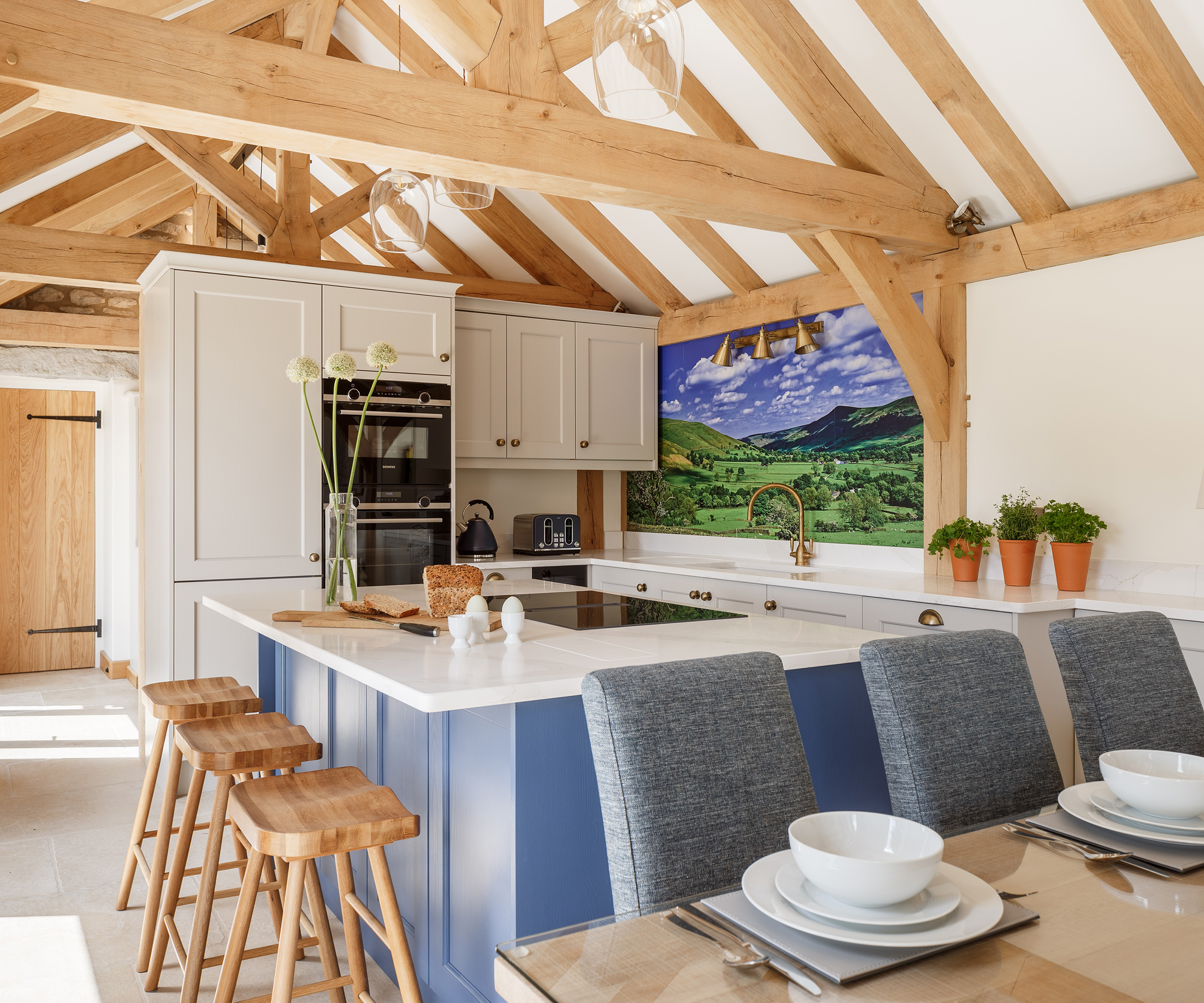
Off-site extension options
Prefabricated or off-site construction systems, including cross laminated timber (CLT), oak frame, structural insulated panels (SIPs) and timber frame, often work well on house extension projects. As the name suggests, the majority of work happens in a factory off-site, and components are then delivered to site ready for erection.
Other solutions which may be appropriate if you are simply looking to replace an existing conservatory extension with a more modern solution, could be using a pre-fabricated model such as a hup! system. Built off-site, they will still require a level of groundworks, but can be a good option where you may already have a strong enough floor slab in place to support the lighter weight of a modular building.
On site can still benefit from modern methods
However, if you are choosing a fairly simple extension design, most builders will be able to quote for this easily, and will be well versed in knowing how to get it built quickly and efficiently. Due to the complexities of working with an existing structure, on site building methods, such as brick and block and stick built timber frame, are still very popular for building an extension.
That said, there are still modern methods that self builders have been using that can also be adopted by extenders to potentially make the job of building a house extension that bit quicker and easier. These can include beam & block floors for your floor structure, liquid floor screeds which are good in smaller spaces, I-joists which can carry heavier loads, prefabricated roof trusses and monocouche render which is a type of house rendering material that can be sprayed onto walls potentially reducing the need for scaffolding.
DIY vs professional build
If you're asking 'can I build an extension myself?,' the answer is yes to an extent, although the advice in our guide about this is worth considering as it shows the difficulty level of some of the work involved. What’s more, while it can be tempting to chip in to try and keep costs within budget, some jobs need to be left to the professionals.
As chartered surveyor, Ian Rock – who played a major role in building his own extension – says, "anyone with an aptitude for construction may relish the prospect of learning new skills, taking genuine pride in their achievements. But as a general rule it’s best to leave anything seriously time-critical to the professionals, along with all the heavy duty structural work. If your extension needs to be completed sooner rather than later it makes sense to stick to tackling jobs near the end of the project, such as landscaping."
The type of work you choose to undertake when building an extension will depend on how happy and handy you are with the tools. Pick parts of the build to work on where there’s less risk of causing delays. Internal joinery, laying flooring and decoration are all areas where with some decent DIY skills you can contribute, without causing delay or making costly mistakes.

Chartered surveyor, Ian Rock MRICS, is a director of Rightsurvey.co.uk and the author of eight popular Haynes House Manuals, including the Home Extension Manual, the Self Build Manual and Period Property Manual. He is also the founder of Zennor Consultants, providing house surveys and professional guidance on property refurbishment and maintenance, as well as design and construction advice for home extensions and loft conversions.
How do I find a builder for my house extension: Going out to tender
If you feel ready to move towards the next steps of formalising your house extension plans, finding a builder and having an informal chat with a couple of local ones is a wise next move. At this early stage, it will allow you to get even more a sense of the feasibility of extending from an engineering and construction perspective – it may also impact how you build it.
But, as with finding an architect, it’s good to ask around for recommendations for those companies specialising in house extensions, as well as speaking to more well-known firms.
“A good local builder will likely have so much experience, extending all sorts of houses, that they have invaluable advice to impart, so use it to your advantage before getting plans drawn up,” recommends master builder, Andy Stevens. “If you engage with a builder before plans are drawn up then you can discuss structural details, groundworks and so on first.”
Then, once you are comfortable with your design and build method, to get the final breakdown of how much does an extension cost, it’s advisable to go out to tender in order to get not just the most competitive price, but also the right team in place.
“The aim of going out to tender for works is to obtain a fair and competitive price from the market to achieve the project you are proposing,” explains project manager and chartered surveyor, Bob Branscombe.
Approaching how to prepare tender documents can be tricky. “First, speak to at least four (ideally six) builders informally, to brief them about your scheme and to gauge interest. Then whittle the list down – you’ll probably have three to four companies who have agreed to tender. These will form your list, and will all be sent a pack of documentation."
The pack must contain a framework to cost the job, a timescale to price the work and a copy of the legislative framework, plus key documents such as drawings, specifications, planning permission compliance, and so on. Give them a timescale to get back to you by, but be realistic – give them at least four weeks – there’s a lot for them to go through.
When you get the quotes back, go through them thoroughly (your quantity surveyor, if you have one, can look over the cost breakdown too), and ask questions. Don’t be afraid to push back and query items you’re not sure about.
“It’s also critical that a schedule of works and specification documents are submitted to all the builders who are tendering for the work,” says Charlie Avara. “If you just provide a set of drawings with no specification document, each builder will assume their own specification for the materials – and these can vary in cost significantly.
“Likewise, the schedule of works will list out all elements to be priced for. For example, the installation of the finished flooring may not be shown on the drawings, but you may want this included in the cost breakdown,” she adds. “The schedule of works and the specification document will eradicate any ‘assumptions’ and will enable you to compare like for like.”

6. Project managing your house extension
There are a number of different routes available to you regarding project management when building an extension – all of which will involve different levels of cost and involvement from you. Choosing the right one will also depend on the size, scope and style of your project.
1. Retaining an architect to oversee work
“Generally, if an architect is appointed for a full design service, we’ll assist the client in appointing and then co-ordinating the other specialists and consultants up to a start on site,” explains Nimi Attanayake, founder and director at nimtim Architects.
This would encompass the co-ordination of the various consultants required before the project begins, including designers, structural engineers, party wall surveyors, the Building Control Officer plus any other specialists. Your architect will also see you through the planning process.
Once construction begins, project management responsibilities could then be passed onto the main contractor. “This role would encompass appointing, co-ordinating and managing the separate construction packages and contractors, such as foundations, structure and finishes,” says Nimi. “The architect’s role during construction would then be one of contract administrator – facilitating the contract between the client (you) and the builder. We’d inspect the site regularly to ensure the project is being built according to our information.”

Nim is director and co founder of nimtim architects. A qualified garden and landscape designer, and a UK qualified architect since 2008, she has worked for some of London’s most highly regarded practices and has a wealth of architectural and building knowledge.
2. Employ a Design & Build company
If you’d prefer to keep everything under one roof, there are design and build companies, who specialise in house extensions, who have in-house professionals who’ll be able to take you through from the start of the design process right up until completion.
3. Hire a project manager
Or, for larger and more complex schemes, you might consider employing a professional project manager to oversee everything. Going down this route could save you time and potentially stress but will cost you extra money. Using a professional project manager brings the benefit of experience however as they will be well-versed in managing the challenges that arise throughout the build because they’ll have done it plenty of times before. The downside of this route is typically the additional cost, but it is a good option for the time poor.
4. Choose a builder who will project manage your house extension
Depending on the size of the company you hire and the size of your build, you may find the builder or site manager is experienced enough to manage the build without needing a designated project manager. In this instance, you may want to think about how much time you can dedicate to the build, as unless you have empowered them to make all the decisions on your behalf, they may need more input from you on a regular basis.
5. Project manage the scheme yourself
If you’re working to a tight budget, you could be asking can I project manage my building project as a way to save some pennies. As well as giving you a greater degree of control over the budget and construction, it could be an enormously satisfying experience. “Project managing a construction scheme is always challenging and difficult, but it comes with its own rewards and satisfactions,” says Nimi Attanayake. “Providing you are comfortable enough to undertake it, the feeling of satisfaction and reward may be an advantage in itself.”
6. Split the project management
It may be that you can split the responsibilities between yourself and your main contractor. For instance, the building company could manage construction until the extension reaches watertight stage, at which point, you take over the role and project manage the rest of the sub-contractors (plumbers, electricians, plasterers etc) yourself. Every project is different, so the key to managing your extension effectively is to come up with a strategy that maximises your skills, the expertise of the professionals you employ, and your budget.
For my Grand Designs scheme, I opted for a version of the split project management scheme, whereby both my main contractor and I were heavily involved from day one until the very end. While my main contractor dealt with the fabric of the building and getting it out of the ground, I was responsible for bringing in sub-contractors and lots of materials including fundamental elements such as windows, doors, fixtures and fittings and the biomass heating system.
This meant being full-time on site 4-5 days of the week and long hours every evening, but it certainly made the process faster and smoother. Being on site to make an instant decision prevented delays and also ensured there were no misunderstandings.
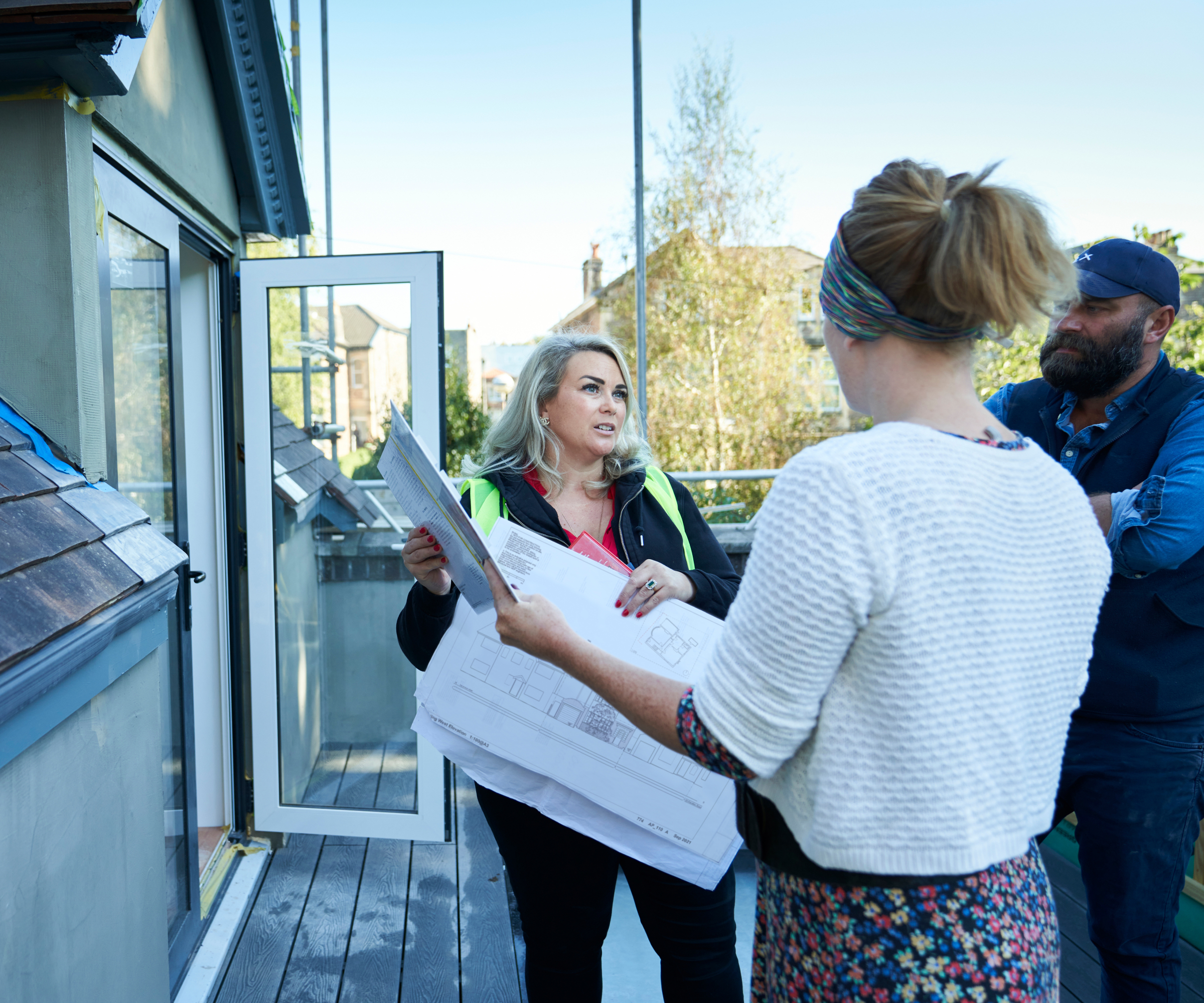
7. The pre-build stage
Once the fundamentals of agreeing your plans, receiving planning permission or permitted development and securing your funding are all in place, you’ll need to take the necessary steps to finalise detailed costs and the legalities of being able to officially start work on site. This is classed as the pre-build stage when you know your home extension is going to happen, but you just need to iron out the last few details.
You’ll also need to make sure the necessary logistics are in place so that you and your family can live through the inevitable disruption of building an extension.
Do I need a Party Wall Agreement?
While planning permission or permitted development is one requirement of building an extension, there are also other considerations such as the Party Wall Act.
While your neighbours cannot stop you from building up to, or even on, the boundary between your properties, even if it requires access onto their land (providing you have planning permission to do so, and there are no restrictive covenants) there are instances when The Party Wall Act applies.
Ian Rock explains: “For aspiring extension builders the part of the Act that’s often most relevant is where it applies to building foundations close to neighbouring buildings or garden boundary walls.
“In order to trigger the Act, excavation normally needs to be within a critical distance of three metres from the adjoining property where your new trench is deeper than their existing foundations,” explains Ian.
This may have more impact if you are extending an older house as older properties tend to have relatively shallow footings, meaning in most cases it’s a ‘given’ that the new ones supporting the extension will be considerably deeper than your neighbour’s.
"Where there is any doubt, it might be worth consulting any records of foundation depths or seeking an expert opinion, for example from a Building Control surveyor,” suggests Ian. The alternative would mean trial holes being dug next to your neighbour’s home to confirm actual foundation depths.
“However,” warns Ian, “in some cases excavating within six metres of an adjoining property can also be covered by the Act. But this only applies where the new foundations are so deep that drawing an imaginary line downwards at a 45° angle from the bottom of the next door’s foundations would hit them, for example on a steeply sloping site or where you’re incorporating a basement.
"There are two other situations where the Party Wall Act often applies,” he adds. “It’s not unusual for new extensions to be designed to maximise floor area by building right up to, or ‘astride’ the garden boundary between two properties. The second situation would be in cases where you physically cut or alter a party wall, such as where you want to build onto your neighbour’s existing wall so it becomes your new extension’s party wall.
"Happily, minor works like fixing screws or plastering onto party walls are not significant enough to be covered by the Act, but resting a new beam within the wall, as you might for a loft conversion, definitely would be.”
This is not a matter covered by planning or building control, so in these cases you may need a surveyor to act on your behalf. The act also does not apply in Scotland.

When should I start building an extension?
There’s no right or wrong answer to this question, although you may be wise to avoid starting in the middle of winter if you can. The weather will potentially slow down your progress, (I had to close a site at one point on a build because the weather was so bad), there will be extra mess and dirt to deal with and you could find yourself exposed to the elements.
That said, another factor that will play a part is the current market conditions as there’s no doubt that rises in the cost of living have affected construction too. Building materials have accelerated in price and contractors are charging more for labour which may mean you need more time to secure extra funding.
Added to this is the fact that high interest and mortgage rates mean more people are looking to extend rather than move, good builders can be booked up for months in advance.
So while it will come down partly to personal preference, your start date will also be determined by when your chosen team of professionals is ready to start and market conditions are right.
Where will I live while my house extension is built?
Where you live during your house extension project will largely depend on how safe it is to live there while the work is taking place, how much work needs to be done to your existing home and how long you will be without functional spaces such as kitchens and bathrooms.
If you’re planning a large wrap-around extension idea for example to house a large open plan kitchen diner, there will come a time when the external walls to your home need removing and you won’t have a kitchen to use until the new one is installed.
Having followed both routes – living on site and off site during house extensions, I think it also depends on you as a person, your family situation and your tolerance for living without home comforts. The dust and dirt is inevitable, regardless of how much plastic sheeting you put in place, but if you consider it all an adventure, the end result will hopefully be enough to make those times when you are sleeping on the floor and have to wash your dishes in the bath seem a distant memory.
If not, you could consider putting a static caravan on site for a few months (if space and and the local planning authority allows), moving in with friends or family during the most disruptive times, negotiating a longer term rental on a holiday let, or for larger projects, taking a six month rental on a nearby property. Just remember to factor this into your overall budget when working out how much you need for your house extension.
The advantage of not living on site? It can also help speed up the work as if builders don’t have to clear the site each night to make it more habitable as it can increase the hours spent working as opposed to cleaning and tidying up.
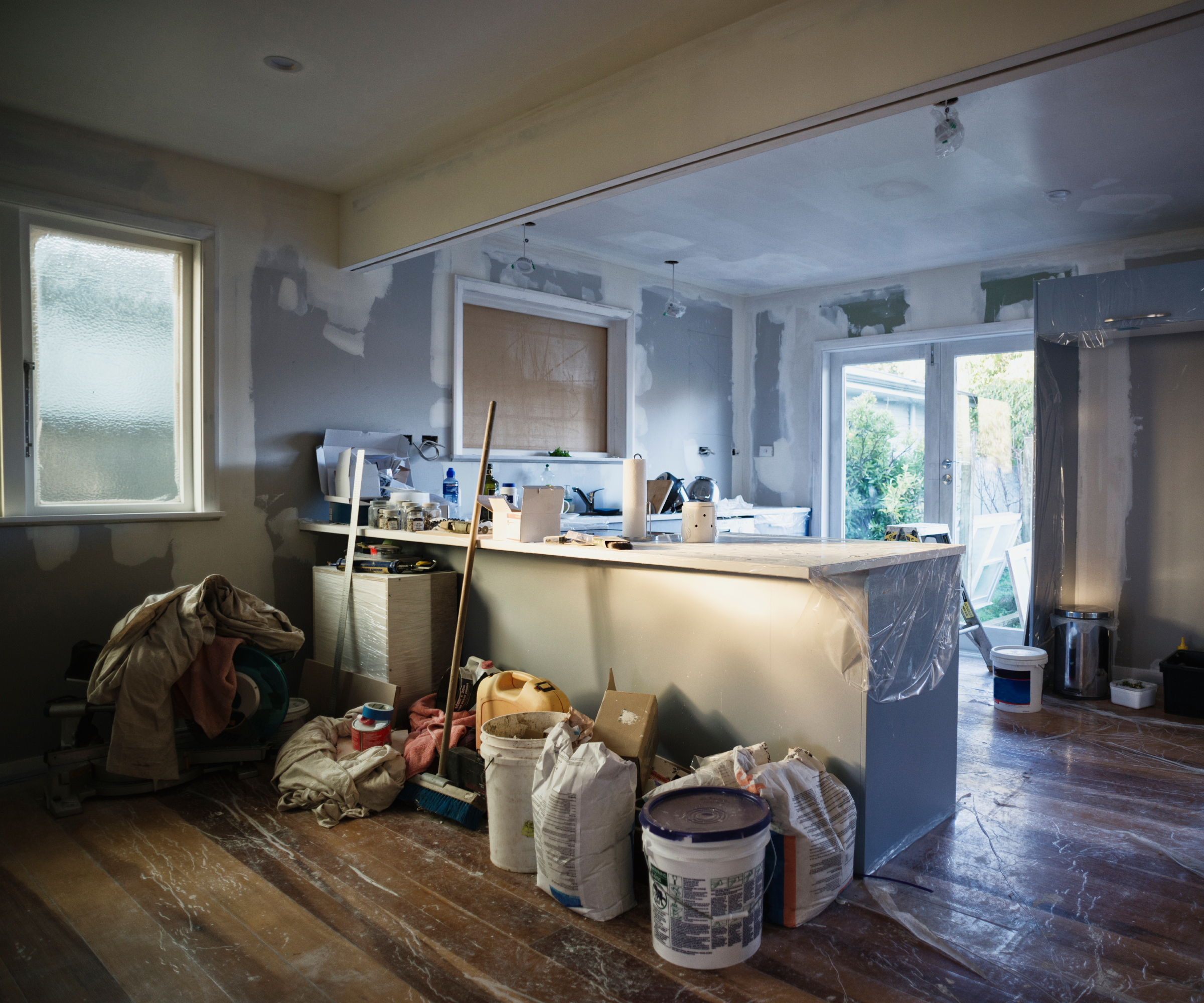
Organising insurances and a warranty
When carrying out a house extension you need to have extension insurance with an A-rated insurer to cover the existing structure and the new works until you complete the project.
Even if your builder has insurance, it is important to check their documents as the majority have liability cover which will require you to prove fault in the event of a claim, which can mean lengthy legal battles. This may also not cover any natural events claims, such as fire, flood and storm damage.
If you are vacating the property during the build, you will require site insurance or unoccupied buildings insurance which will usually be a minimum six month policy. Always contact your existing insurance provider to notify them of works before you start, as many standard home insurance policies will not cover your existing home whilst major building work, such as an extension, is taking place.
Getting a warranty for your extension is also recommended as it will cover you for things such as structural defects or faulty workmanship. Should the worst happen, the builders who did the work will need to return to put right what has gone wrong.
“The builders or any subcontractors you may employ directly should have their own insurance that covers the extent of the work,” confirms Charlie Avara, “as well as public liability insurance. It’s always good practice to ask to see a copy of their insurance documentation well in advance.”
Do I need to pay a Community Infrastructure Levy?
Before embarking on house extensions you should also establish if you will be liable to pay the Community Infrastructure Levy (CIL). Some councils operate this scheme, and it’s applicable to extensions over 100m² in gross internal area (even if they are built under Permitted Development).
However, a self builder’s relief can apply, as Jonathan Durndell explains: “To benefit from the self builder’s relief the applicant does not have to physically construct the extension themselves but they must intend to live at the property as their main residence for a minimum of three years from completion.
“It is advisable to check with your local council to establish if any CIL charges are applicable and the route to apply and claim relief before you start construction.”
8. On-site – the key stages
There’s nothing quite like the first day on site at a new build. The sense of anticipation of what lies ahead. Of course, the reality is you’re still some way off the end result. Setting out, digging test holes, setting up a site is all a necessary process but won’t give you an immediate glimpse of the house extension you’ve been visualising for months or even years.
Depending on the extension type you’re building, many of the stages will follow a similar process to the steps involved in building a house. Although for an off-site solution such as an oak-frame extension, the process will be slightly different as some of the structure will be constructed off-site and then delivered to the site to be erected. This can then feel as if you see the finished product much sooner.
However, if you are undertaking a traditional, on-site build route, it’s good to get a sense of the process that will be followed. It’s covered in more detail in our comprehensive extension planner guide, but for the purpose of arming you with the essential information you need in the early stages of research, you should expect it to comprise seven key stages.
- Preparing site – your main contractor of builder will move onto site, bringing the necessary tools, equipment and infrastructure and mark out the extension
- Groundworks – excavation for foundations, building control approval of this stage and then build up to damp proof course level
- Creating the superstructure – walls are built, window and door openings materialise, drainage and trenches for services. Scaffolding added if building a double storey extension
- Adding the roof – roof structure and covering, external works such as fascias, soffits and guttering added
- Windows and doors – the point at which you become watertight as windows and doors are added and if openings between your existing house and new extension haven’t already happened, this is when they will
- First fix electrics and plumbing – starting work to create the new schemes for your house extension and updating your current home if needed. Also the stage for floor screed and underfloor heating and external hard landscaping
- Interior works and second fix – ceilings and walls will be plasterboarded and skimmed, staircases, tiling and kitchens installed, internal doors added, electrics and plumbing completed, radiators, fixtures and fittings and decorating all take place
Charlie Avara’s top tip when it comes to the final stages? “Always make allowances for the decorator to be the final trade on site,” she says. “It’s amazing how many small scratches, bumps and dusty fingerprints can ruin a fabulous job, but are unavoidable while all the other trades are completing their work. I usually allow for one or two days at the very end of the project for the decorator to complete final touch ups.”

9. Snagging and handover
Before you put any furniture in, and even way in advance of this point, it's essential you don't miss the process of extension snagging. Document everything you find with pictures and written lists. Ideally you’ll want to get anything fixed before you think of fully using the space – it only gets harder as you fill it with furniture and start living in it.
My best advice having snagged both domestic and commercial properties – start it early, allow plenty of time and be picky about what you report. Even if you agree with the main contractor it can be crossed off the list or dealt with by someone else, the minute the team leaves the site, it will take twice as long to get it fixed than if you deal with it now.
Check for early cracks, gaps in sealant, electrical faults, tiling mistakes and windows or doors not opening smoothly. Does your heating and water work correctly? Are your appliances all up and running?
Make sure you have also agreed a second date to pick up on those defects that will only come to light once you’re using the space. On larger projects, it is standard to have a retention clause in your contract to withhold an agreed sum of money until the second snagging/defects stage has been completed.
In addition, at handover, make sure you have any paperwork and legal documents in place such as warranties, guarantees, FENSA certificates and the necessary documents from any trades such as electricians and plumbers.
“To get your regulations signed off by your local authority, the inspector will want to see an NICEIC certificate for electrics and a Gas Safe certificate for any boiler works or amendments to the gas pipes,” notes Charlie Avara.
FAQs
How can I keep costs down?
Keeping the design and shape of your extension build simple – either square or rectangular shaped with a flat roof – will also be less expensive than angled designs with more complicated roof structures and lots of glass.
It is possible to design and build extensions for every budget, so putting in work at this stage can pay off later in the project.
If you have good DIY skills, you could also consider taking on some of the interior work yourself such as painting walls or ceilings, tiling or laying floors.
And of course, one of the ways you can help keep costs down is by sticking to your plans.
“I find one of the biggest areas where the costs can spiral is when there are client requests for changes while the build is progressing,” says Charlie Avara. “This can be reduced by having a weekly walk-through with the builder so you know what work has been completed, and what work is coming up next. For example, it’s always going to be cheaper to add an extra socket in a newly framed stud wall before it’s been plasterboarded over, skimmed and painted.”
Will it be the same process if I’m extending a listed building?
If you are adding an extension to listed buildings, this will always require listed building consent and it is a criminal offence to alter a listed building without it. Planners will always regard the existing property as more important than what you are proposing to add to it. Any extension will therefore have to respect the flavour, appearance and historic material used in the construction of the original house.
Subsequently, building an extension onto a listed building may cost more and take longer as you may need to use specialist materials, building techniques and professionals in order to complete the project.
How long will my house extension take to build?
The exact answer to this question will depend on a number of factors including but not limited to the size and style of your extension, the market conditions which may affect material choices and the availability of tradesmen, whether the work includes upgrading your current home right through to your final fixtures and fittings.
As a rough estimate, a small single storey extension will likely take around 4-6 months to complete, while anything bigger will naturally take longer. What’s important is that you have an honest conversation with your builder prior to starting in order to agree a timescale. While there will always be circumstances beyond anyone’s control that impact on the completion date, you may want to consider adding a penalty clause into the contract which reduces the cost if they run over as a result of them personally delaying completion. For example, some builders may take on more than one job at any given time and you don’t want to be the job that gets left behind.
Charlie Avara’s top tip before you start to help the process run smoothly?
“Look to establish a relationship with your building team as soon as the drawings are submitted to planning, if not before. With the design process taking months to complete, you can discuss provisional costs with your builder, so you will know approximately what's left from your budget for the finished materials. It also means your builder will have you earmarked in their schedule, so the progression from design through to build is relatively seamless.”
Deciding to build an extension can be a big step. If, after doing your research you decide to either scale down your plans or scrap them entirely, it's worth taking a look at whether a loft conversion or much smaller house extension idea might be the answer instead. Failing that, choosing to renovate existing rooms can sometimes increase usable space to achieve your end goals.
Michael is Homebuilding & Renovating's Director of Content, Vice Chair of the self build industry body, the National Custom and Self Build Association (NaCSBA), presenter of multiple property TV shows and author of Renovating for Profit (Ebury). He also runs an architectural and interior design practice, offering design and project management services. He is one of the country's leading property experts and has undertaken over 30 building projects including two self-builds and the renovation of a Grade-II listed farmhouse.
Michael has presented over 150 property shows for BBC, ITV1, Channel 5, UK TV Style, and Discovery RealTime, including I Own Britain's Best Home; Don't Move Improve; Trading Up; Good Bid, Good Buy; Build, Buy or Restore?; How to Build A House; and Hard Sell.
Michael is also a regular expert at the Homebuilding & Renovating Shows. He has written for leading British newspapers, including The Daily Telegraph, Sunday Times, Daily Express and The Independent and has appeared on news programmes such as BBC Breakfast.
- Michelle Guy
- Sarah HarleyAssistant Editor


